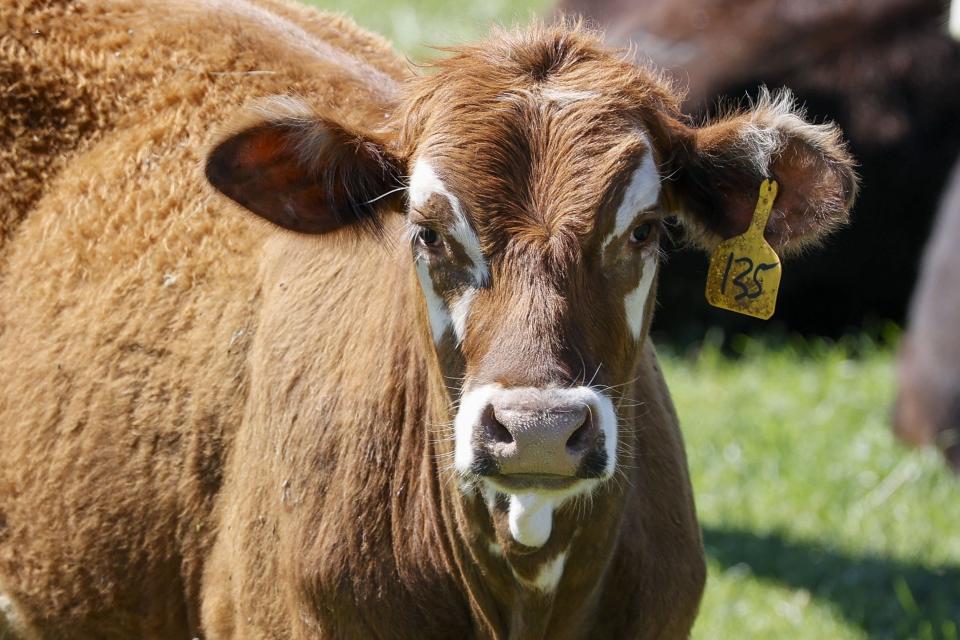The new analysis suggests there is a “strong possibility” that bird flu has been spreading on U.S. cattle farms since last year, raising questions about America’s pathogen surveillance capabilities.
Last month, shortly before the human case was identified in Texas, the H5N1 strain was first detected in cows. The virus, which has killed tens of millions of birds worldwide since 2020, was later detected in 36 dairy herds in eight US states, raising concerns about the virus’ ability to infect mammals.
U.S. health officials released genomic data from infected cattle on Sunday, saying there was previously evidence that H5N1 was spreading among cows. However, analysis of the data shows that the virus has been circulating in animals since late 2023.
“It seems to me that this has been going around in cattle for months, right under our noses, even before the first sign that something new might be happening in February,” said Professor Michael Worobey, a biologist at the University of Arizona. analysis.
“This common ancestor may have existed in late 2023,” he added on X (formerly Twitter). “The common ancestor may have been in cattle, with only a single introduction into cattle and subsequent spread. But we cannot rule out multiple subsequent jumps from a largely bird-inhabited reservoir.”

The ability of the virus to spread among cows is important because it provides more opportunities for the virus to evolve to better infect other mammals, potentially including humans.
Of particular concern is whether H5N1 can now infect pigs; This condition is often described as “vessels of mixing” for influenza and increases the likelihood of the virus spreading to humans.
There are also unconfirmed reports of the virus jumping from cows to birds; This highlights the potential threat of recombination, which occurs when different viruses combine and combine their characteristics to form a new strain.
Vice Dean of Global One Health, Faculty of Veterinary Medicine and Biomedical Sciences, Dr. Gerlad Parker said the cattle outbreak demonstrates the need to improve pathogen surveillance in the United States.
“The virus is more widespread than reported… and was likely circulating in cattle for some time before it was detected in February, and it also tells us that we need to modernize surveillance systems with a one-health approach that integrates animal and human health.” said.
Questions about the cattle industry
At this time, the World Health Organization has said that the risk to humans is still considered low, but surveillance efforts should continue; this is potentially hindered by the lack of accessible information published by the U.S. Department of Agriculture (USDA). experts say.
Following mounting pressure, the USDA on Sunday evening released 239 genetic sequences of H5N1 flu from poultry, wild birds and dairy cows; Scientists hoped this would allow them to look for new clues about the spread of the virus.
But the data was published without any information showing where and when each animal was infected.
Virologist Dr. from the University of Saskatchewan Vaccine and Infectious Diseases Organization, who was involved in the analysis. “It causes unnecessary delays, and also all the sequence data USDA has collected so far is probably incomplete,” Angela Rasmussen said. By Prof Worobey’s team.
“Understanding how this is transmitted to cattle and the mechanism by which it spreads to them is important, but missing metadata ultimately hinders this goal.”
Some believe that USDA does not provide information that will protect the commercial interests of the cattle industry.


Michael Osterholm, director of the Center for Infectious Diseases Research and Policy at the University of Minnesota, said: “USDA focuses primarily on protecting the animal production industry, and I think that’s a short-term goal, but a long-term mistake.”
Mr Osterholm added that it was also unclear at this stage what research the USDA was conducting, further clouding the understanding of how the cows became infected.
In another development, the American Association of Cattle Practitioners, a nonprofit veterinary group, issued a statement last week urging government agencies, diagnostic laboratories and federal agencies to refer to the virus in cattle as “Bovine Influenza A Virus.” of H5N1.
The organization said in a public letter that this was because they “believe it is important for the public to understand the difference in order to maintain confidence in the safety and availability of beef and dairy products for consumers,” a move that was criticized as “unscientific.” and dangerous” by virologists.
The Telegraph reached out to the USDA for comment but did not receive a response.
However, a spokesman said: Statistics magazine: “USDA is committed to the timely and transparent release of outbreak-related information as it becomes available. “We will continue to work to provide timely and accurate updates to the public, our stakeholders, and the scientific community as we learn more.”
Protect yourself and your family by learning more about Global Health Security